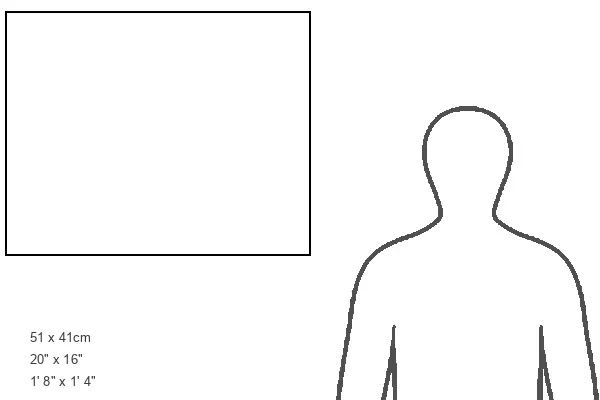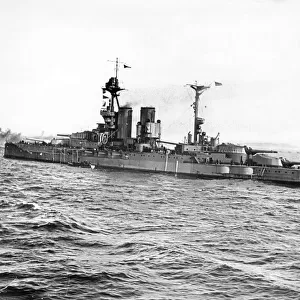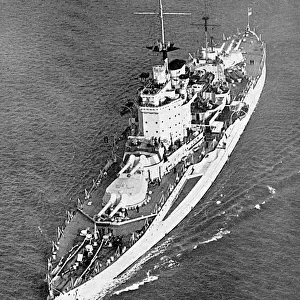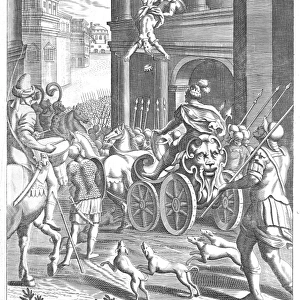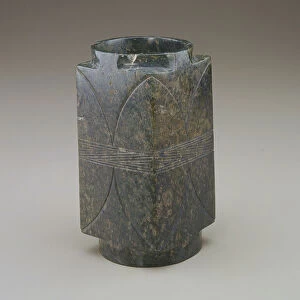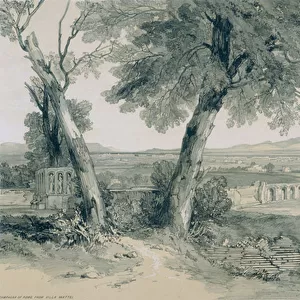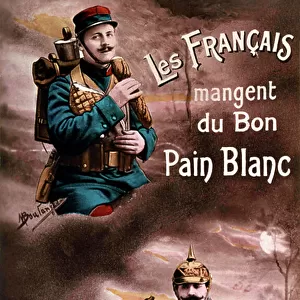Canvas Print : Lowering a paravane on entering a minefield, WW1
![]()

Canvas Prints from Mary Evans Picture Library
Lowering a paravane on entering a minefield, WW1
Lowering a paravane on entering a minefield during the First World War. The paravane is towed underwater in order to detect the presence of mines. Date: 1914-1918
Mary Evans Picture Library makes available wonderful images created for people to enjoy over the centuries
Media ID 7193023
© Mary Evans Picture Library 2015 - https://copyrighthub.org/s0/hub1/creation/maryevans/MaryEvansPictureID/10530079
Detect Detection Entering Lowering Mine Minefield Mines Minesweeping Sweep Sweeping To Wed Under Water War Time Ww 1
20"x16" (51x41cm) Canvas Print
Introducing the Media Storehouse Canvas Prints collection, featuring the captivating image "Lowering a Paravane in a Minefield, WW1." This evocative photograph, sourced from Mary Evans Prints Online, transports us back in time to the trenches of the First World War. Witness the courage and ingenuity of soldiers as they lower a paravane, an underwater mine detector, into the treacherous waters of a minefield. The paravane, a vital tool for ensuring the safety of troops, is towed beneath the surface to detect the presence of hidden mines. This powerful and poignant image, captured during the conflict's pivotal years of 1914-1918, is a testament to the resilience and determination of those who served. Bring this historical moment to life in your home or office with a stunning Media Storehouse Canvas Print. Each print is meticulously crafted using premium materials and high-definition printing techniques to ensure vibrant colors, sharp details, and long-lasting durability. Elevate your space with this inspiring piece of history that will ignite conversations and spark curiosity.
Delivered stretched and ready to hang our premium quality canvas prints are made from a polyester/cotton blend canvas and stretched over a 1.25" (32mm) kiln dried knot free wood stretcher bar. Packaged in a plastic bag and secured to a cardboard insert for safe transit.
Canvas Prints add colour, depth and texture to any space. Professionally Stretched Canvas over a hidden Wooden Box Frame and Ready to Hang
Estimated Product Size is 50.8cm x 40.6cm (20" x 16")
These are individually made so all sizes are approximate
Artwork printed orientated as per the preview above, with landscape (horizontal) orientation to match the source image.
EDITORS COMMENTS
In the turbulent waters of the First World War, the threat of mines loomed large for naval forces as they navigated through contested seas. In this evocative image from the archives, we witness a crucial moment in the minesweeping process as a paravane is lowered into the water, ready to detect the presence of mines as a ship enters a minefield. The paravane, an essential tool in mine warfare, is a large, flat, weighted device, often resembling a paddle or a fish, which is towed underwater behind a sweeping vessel. Its primary function is to drag along the seabed, disturbing the mines and triggering them to detonate, thus clearing a safe passage for the ship to proceed. This photograph, taken between 1914 and 1918, captures the intensity and danger of the minesweeping operation. The crew, dressed in heavy protective gear, work in unison to lower the paravane into the water. The ship's engines churn the water, creating a frothy wake as the paravane is released, ready to begin its vital mission. The paravane's importance during this era of warfare cannot be overstated. The Great War at sea was characterized by the extensive use of mines, which were laid indiscriminately to disrupt enemy supply lines and hinder naval movements. The minesweeping process was a crucial aspect of naval warfare, requiring courage, skill, and precision from those involved. This image offers a glimpse into the past, reminding us of the vital role that minesweeping played during the First World War and the heroism of those who risked their lives to keep the seas clear for the safe passage of Allied forces.
MADE IN THE USA
Safe Shipping with 30 Day Money Back Guarantee
FREE PERSONALISATION*
We are proud to offer a range of customisation features including Personalised Captions, Color Filters and Picture Zoom Tools
FREE COLORIZATION SERVICE
You can choose advanced AI Colorization for this picture at no extra charge!
SECURE PAYMENTS
We happily accept a wide range of payment options so you can pay for the things you need in the way that is most convenient for you
* Options may vary by product and licensing agreement. Zoomed Pictures can be adjusted in the Cart.




